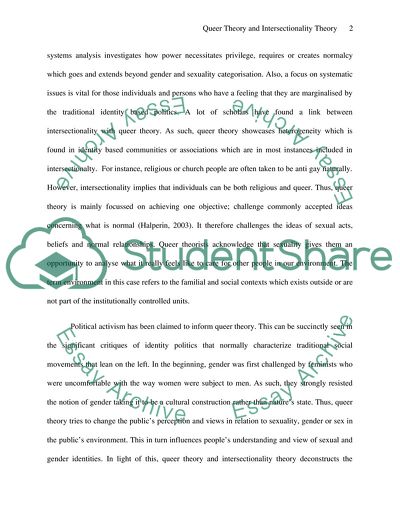Cite this document
(Queer Theory and Intersectionality Theory Essay, n.d.)
Queer Theory and Intersectionality Theory Essay. https://studentshare.org/sociology/1874695-outline-and-evaluate-the-ways-that-queer-theory-and-intersectionality-theory-might-challenge-our-understandings-of-sexual-categoriesidentities
Queer Theory and Intersectionality Theory Essay. https://studentshare.org/sociology/1874695-outline-and-evaluate-the-ways-that-queer-theory-and-intersectionality-theory-might-challenge-our-understandings-of-sexual-categoriesidentities
(Queer Theory and Intersectionality Theory Essay)
Queer Theory and Intersectionality Theory Essay. https://studentshare.org/sociology/1874695-outline-and-evaluate-the-ways-that-queer-theory-and-intersectionality-theory-might-challenge-our-understandings-of-sexual-categoriesidentities.
Queer Theory and Intersectionality Theory Essay. https://studentshare.org/sociology/1874695-outline-and-evaluate-the-ways-that-queer-theory-and-intersectionality-theory-might-challenge-our-understandings-of-sexual-categoriesidentities.
“Queer Theory and Intersectionality Theory Essay”. https://studentshare.org/sociology/1874695-outline-and-evaluate-the-ways-that-queer-theory-and-intersectionality-theory-might-challenge-our-understandings-of-sexual-categoriesidentities.


